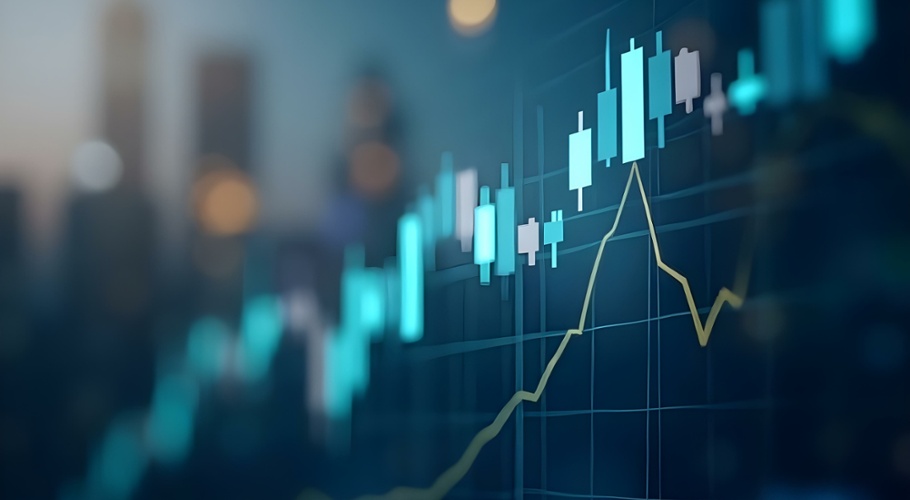Home and away: Investing in climate change
Now that Australia has set a 2050 target for net zero emissions, the race is officially on to find industries, technologies and investments that can help get us there.
Rather than set a legislated target for emissions reduction or establish mechanisms such as a carbon tax, the Federal Government has announced a “technology, not taxes” plan. The plan is to support industries that can help reduce Australia’s greenhouse gas emissions and contribute to limiting global temperature increases to less than 2 degrees Celsius below pre-industrial levels.
So as not to disrupt exports and Federal Budget considerations, the plan banks on continuing strong demand for coal, oil and gas, while buying time for those industries and the rest of the economy to transition to more environmentally sustainable practices.
At the same time, the NSW Government has announced plans to pump $3 billion of incentives into developing green hydrogen as a fuel for electricity generation and transportation. The plan aims to stimulate investment in hydrogen production at hubs along the state’s existing electricity network to attract up to $80 billion in private sector investment and halve the state’s emissions by 2030.
Investors looking to back decarbonisation and invest along sustainability themes already have plenty of options in the form of exchange traded products, managed funds and direct equities. They can also look forward to being offered fresh waves of investment opportunities as companies rush to take advantage of new themes such as green hydrogen and others noted in the 2050 plan.
The challenge for investors is whether to back portfolios of international pure-play exposures, or invest in local companies that are changing the way they do business due to the urgency of climate change and the weight of investor funds screening out harmful environmental practices.
Russel Chesler, Head of Investments and Capital Markets at exchange-traded product manager VanEck Australia, says that while the first renewable energy ETF was launched in Australia in 2008, interest in the sector has exploded in recent years, amid growing understanding of the impacts of climate change and technology developments that can replace fossil fuels.
Data from AUSIEX on commonly-traded securities (including both direct equities and ETFs) associated with sustainability, clean tech, battery tech and hydrogen themes showed significant increases in traded values from January 2019 to November 2021, with battery technology values increasing over 6000% and clean technology just under 500% over this period, and most of the growth occurring in the last 12 months. Trading value in sustainability-oriented securities almost tripled, and increased in the order of 14.6% from 2020 to 2021 whilst hydrogen investments (excluding ASX:FMG) almost doubled from 2021 to 2019.
A significant spike in the number of accounts trading hydrogen was also witnessed from July to August this year, broadly coinciding with FMG’s announcements in relation to progress on its green hydrogen initiatives.
Generational change powers ESG shift
Another factor driving the change is a generational shift in wealth. “Baby boomers are retiring, and wealth is being transferred to younger generations. The older generations have been less aligned with ESG (Environmental, Social and Governance principles) …. and as wealth is transferred, there is more money flowing into ESG, clean energy and sustainability opportunities,” Chesler says.
ETF providers have rushed to meet the demand but have focused on large-capitalisation international clean energy, renewable or battery-focused companies. Australian companies - except for miners supplying the battery industry – lack the scale to be included in the indices used to construct such ETFs.
“Clean energy investment opportunities in Australia are fairly limited. It is not easy to access clean energy, fuel cell, wind or hydro energy companies, so if you want to do that, you have to look offshore,” Chesler says.
The AUSIEX trading analysis uncovered that Millennials and Generation X were accounting for an increasing share of overall contract notes in climate-related securities, increasing from 6.45% to 15.6% and from 33.6% to 39% respectively, whilst Boomers’ share had decreased markedly from just under 60% to 42.9%.
Interestingly, looking across battery technology, clean technology and sustainability themes in isolation, we also uncovered a decline in ‘sustainability’ securities coinciding with an increase in battery technology and clean technology, in a possible indication of a greater inclination towards investment into the technologies looking to address climate issues rather than into existing companies with stronger sustainability credentials.
Funds look abroad for scale
VanEck launched the Global Clean Energy ETF (ASX CLNE) in March, backing 30 of the largest and most liquid companies in clean energy production and associated technology, based on the S&P Global Clean Energy Index. By the end of October, it had attracted $101 million of investor funds and delivered a total return of 15.33% since inception.
BetaShares launched a fund around the same time, the Climate Change Innovation ETF (ASX ERTH) that includes companies with at least half their business in “green revenue” that avoids or reduces carbon emissions. Zoom Video Communications - which has helped reduce travel for meetings - is among 100 eligible companies in the index.
One fund that does include Australian exposures is the ETFS Battery Tech and Lithium ETF (ASX ACDC). Launched in 2018, the fund comprises Australian miners who supply raw materials for batteries, including Pilbara Minerals and Galaxy Resources. But it is still heavily weighted offshore and includes automakers such as Tesla, Rolls Royce and Daimler AG, as well as electronics manufacturers Samsung and Toshiba.
For local investors, the focus on global players means they face added risks such as currency and time zone differences on pricing stocks in the fund as well as sovereign, market and regulatory risks.
Chesler says those who want to play the local market need to “add the S and the G in ESG” to their environmental themes.
Capital markets driving change
VanEck’s MSCI Australian Sustainable Equity ETF (ASX GRNV), launched in 2016, screens out fossil fuel producers and companies with businesses that are not socially responsible to focus on investments with high ESG ratings. As of October, its top holdings included CSL, ANZ Banking Group, Telstra, Transurban and Goodman Group, which are companies that are not directly involved in climate-related industries, but have strong policies to address ESG concerns.
The fund also includes iron ore miner Fortescue Metals Group and gold miner Newcrest, providing a window into the larger forces shaping the investment markets - the need to adapt or be starved of capital.
In the lead-up to the announcement of the “The Plan to Deliver Net Zero The Australian Way” from the Federal Government in October, Treasurer Josh Frydenberg warned Australia was at risk of being shunned by international capital markets if it was not seen to be embracing the transition to a low-carbon world.
“Reduced access to these capital markets would increase borrowing costs, impacting everything from interest rates on home loans and small business loans, to the financial viability of large-scale infrastructure projects,” Frydenberg said in a speech to the Australian Industry Group in September.
“Were we to find ourselves in that position, it would increase the cost of capital and reduce its availability, be it debt or equity.”
According to the 460 member-strong Responsible Investment Association Australasia (RIAA), which advocates for sustainable financial markets, the total funds under management governed by its responsible investing practices increased by A$298 billion to A$1,281 billion in 2020 and now accounts for 40 per cent of Australia’s total FUM. RIAA’s 2021 report highlighted a growing volume of funds screening fossil fuels (22%), as well as tobacco (19%) and firearms (14%) out of their portfolios.
Divestment versus engagement
But there is tension within the investment community over whether to divest from companies that score poorly on ESG or sustainability measures or remain invested to influence them towards better practices.
At a Commonwealth Bank of Australia sustainability conference last month Allison van Lint, Head of Research, Responsible Investments at industry super fund Cbus, said big investors need to be patient and supportive.
“We have long-term investment horizons, and I think that puts us in a good position to remain invested in companies as they work through the transition, rather than simply picking up our portfolio and moving straight to a low carbon portfolio,” she said.
“Cbus owns thousands of companies, and I think if we divested from 20 of them, we would cut our emissions by 50 per cent overnight, but those companies sit in industries that we’re going to need in 2050 and beyond.”
Investors eyeing climate change as a thematic might want to think about those long-term considerations. Fossil fuels will likely continue to play a significant role in energy production and consumption for some time to come.
As highlighted by the recent spike in fossil fuel energy prices, which was spurred by shortages in Europe and China when the lifting of pandemic lockdowns increased demand, shunning companies in those industries making a green transition can also be costly for returns.

